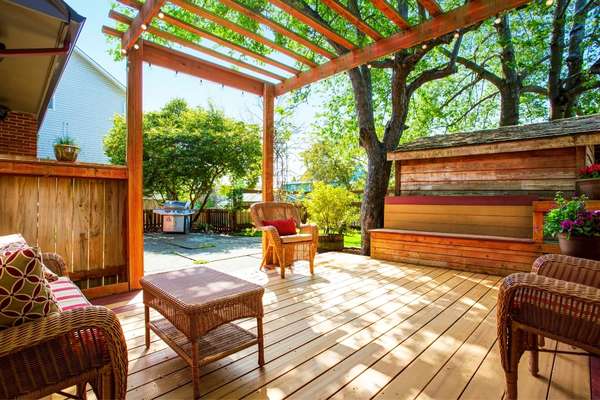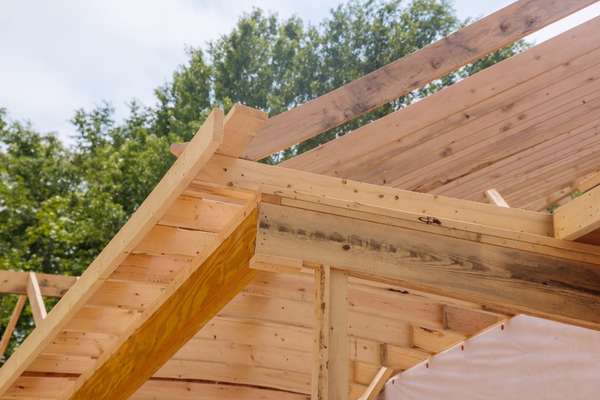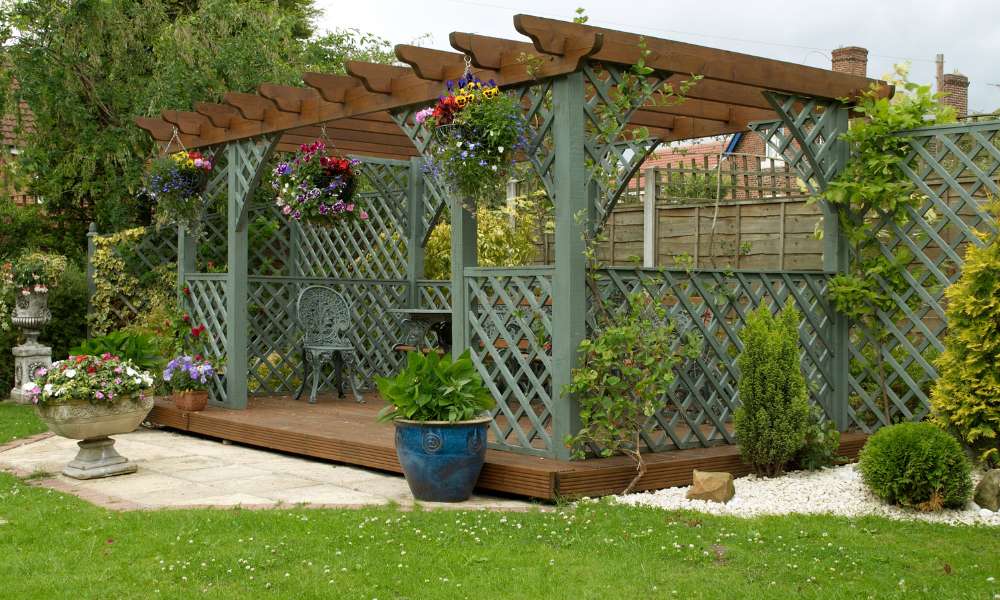Unlock the potential of your outdoor living space with our comprehensive guide on how to build a pergola on an existing deck. Adding a pergola not only enhances the aesthetic appeal of your deck but also provides practical benefits such as shade, privacy, and structural definition. With careful planning and execution, you can seamlessly integrate an arbor into your existing terrace, transforming it into a stylish and functional retreat. Whether you’re looking to create an inviting entertainment area or simply seeking to elevate your outdoor experience, building a pergola on an existing deck offers endless possibilities for customization and enjoyment.
How Long Does It Take To Build A Pergola On An Existing Deck?
The time it takes to build a pergola on an existing deck can vary depending on the size of the project and the complexity of the design. In general, a simple pergola installation on a deck can take anywhere from one to three days to complete. This includes preparing the site, assembling the pergola structure, and securing it to the deck.
Do I Need Any Special Tools Or Skills To Build A Pergola On My Deck?
Building a pergola on your deck can be a rewarding DIY project, but it does require some special tools and skills. You will need basic carpentry tools such as a drill, saw, level, and measuring tape to accurately cut and assemble the materials. Additionally, having some knowledge of construction techniques and understanding how to properly secure the pergola to your deck is important for safety and stability.
Can I Attach The Pergola Directly To My Existing Deck?
Yes, you can attach a pergola directly to your existing deck, but it is important to ensure that the deck can support the additional weight of the pergola and any added elements like plants or hanging lights. You will need to securely anchor the arbor posts to the deck structure using appropriate hardware such as post anchors or brackets. It is also recommended to consult with a professional contractor or structural engineer to assess the feasibility and safety of attaching an arbor to your deck.
Installing Post Anchors

Installing post anchors is a crucial step in building a pergola on a terrace. These anchors provide stability and support, ensuring that your structure is secure and long-lasting. Before starting the installation process, it’s essential to choose the right type of post anchor for your project. Consider factors such as the size of your posts, the weight of the arbor, and the local weather conditions to make an informed decision.
Erecting The Crossbeams

Positioning the crossbeams when building a pergola on a deck is crucial for both structural integrity and aesthetic appeal. Be sure to measure accurately and use a level to ensure that the crossbeams are perfectly aligned. Consider using brackets or hardware to secure the crossbeams in place, providing extra stability in windy conditions. Remember that the placement of these crossbeams will ultimately determine the overall look and functionality of your arbor, so take the time to make sure they are positioned correctly.
Securing The Pergola Structure

1. Checking The Entire Structure For Rigidity
Start by examining the existing deck structure to assess its overall rigidity and stability. Look for any signs of wear, such as cracks, rotting wood, or loose connections. Pay close attention to areas where the terrace attaches to the house, as these points are particularly susceptible to stress over time. Use a level to check for any unevenness in the deck surface, which could indicate underlying structural issues.
2. Using Additional Braces
Once you’ve identified any weak points in the deck structure, reinforce them using additional braces or supports. This may involve installing new posts or beams to provide extra support for the pergola. Be sure to use high-quality materials that are suitable for outdoor use and capable of withstanding the elements. Position the braces strategically to distribute the weight of the arbor evenly and prevent any single point from bearing too much strain.
3. Tightening All Fasteners
Ensure that all fasteners, including screws, bolts, and nails, are securely tightened to prevent the pergola from shifting or wobbling. Inspect each connection point carefully and tighten any loose fasteners using a screwdriver or wrench. Pay special attention to areas where the arbor attaches to the deck, as these joints are critical for maintaining stability. Consider using corrosion-resistant fasteners to prevent rust and corrosion over time, especially if your deck is exposed to moisture.
Using Appropriate Fasteners

Opt for high-quality stainless steel or galvanized fasteners that are specifically designed for outdoor use. These materials boast superior corrosion resistance, ensuring that your pergola remains sturdy and secure even in harsh environmental conditions. Additionally, choose fasteners with the appropriate length and diameter to accommodate the thickness of both the crossbeams and the deck boards. Properly sized fasteners prevent issues such as splitting, warping, or loosening over time, preserving the structural integrity of your arbor. By investing in premium fasteners and meticulously installing them according to manufacturer guidelines, you guarantee the long-term stability and safety of your arbor for years to come.
Ensuring Stability And Structural Integrity

Throughout the process of building a pergola on an existing terrace, it is essential to prioritize stability and structural integrity to ensure the safety and longevity of the structure. Regularly check and reinforce connections between posts, crossbeams, and rafters to prevent any wobbling or instability. Additionally, consider adding diagonal bracing or additional support beams if necessary, especially for larger or more complex arbor designs. Ensure that all components are securely fastened and properly aligned to distribute weight evenly and prevent any stress points or weak spots. By prioritizing stability and structural integrity, you can enjoy your arbor for years to come without worrying about safety or maintenance issues.
Sanding And Staining The Pergola

Sanding and staining the pergola not only enhances its visual appeal but also prolongs its lifespan. Consider opting for a stain with UV protection to prevent fading from sun exposure. Remember, consistency is key when applying the stain – an even coat ensures a polished look that will make your arbor stand out as a focal point of your deck area. By taking the time to properly sand and stain your arbor, you’re investing in both its beauty and durability for years to come.
Regular Inspections And Repairs

Regular inspections and repairs are crucial to maintaining the structural integrity of any outdoor structure, such as a pergola built on an existing terrace. By conducting routine checks, you can identify potential issues early on and address them before they escalate into costly problems. Look out for signs of rot, water damage, or termite infestation that could compromise the stability of your arbor.
The Final Thought
Adding a pergola to your existing deck is a great way to enhance the beauty and functionality of your outdoor space. By following the steps outlined in this article, you can successfully build a pergola that complements your deck and creates a comfortable outdoor retreat. Remember to carefully plan and measure before starting the project to ensure a smooth construction process. With some basic tools, materials, and a little bit of effort, you can transform your deck into a stylish and inviting oasis. So why wait? Start building your dream pergola today!
